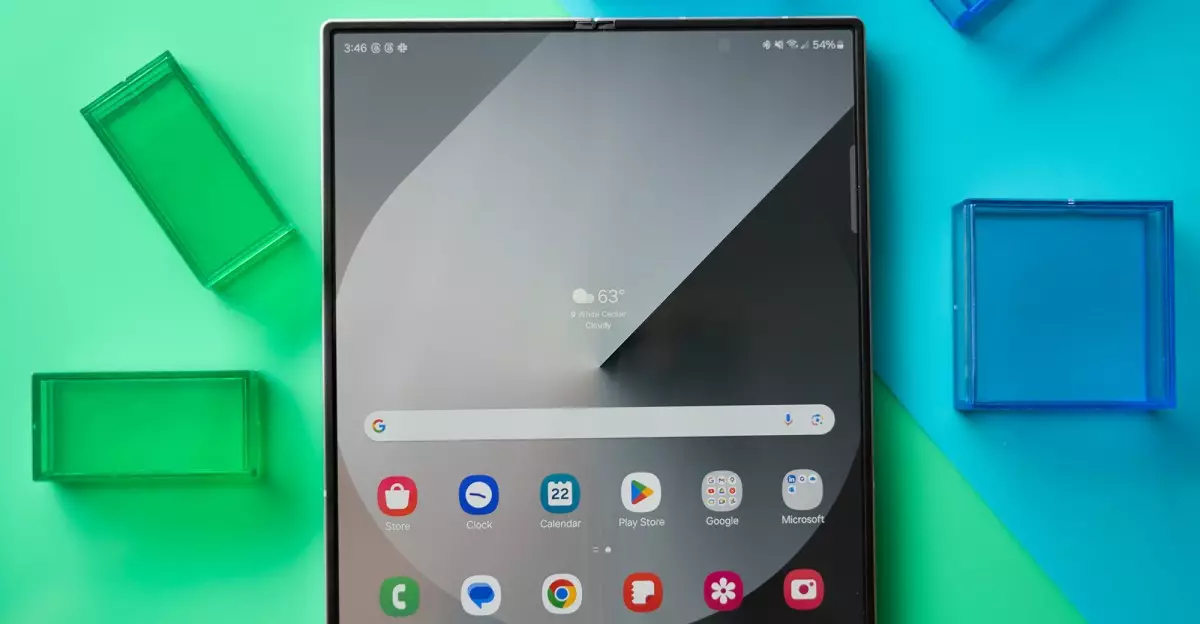Samsung’s relentless pursuit of innovation within the foldable smartphone space underscores a broader narrative about the future of mobile technology. Despite years of pioneering in this niche, the company’s efforts have yet to translate into widespread consumer adoption. The truth is, foldables remain a niche market, primarily appealing to tech enthusiasts and early adopters willing to accept trade-offs. Samsung’s latest ambitions—introducing more premium models like the Ultra foldable—signal a shift from incremental upgrades to a more aggressive push for mainstream acceptance. However, merely branding a foldable as “Ultra” and refining the hardware may not suffice to spark a mass movement. True innovation requires addressing fundamental issues such as durability, cost, and user experience, or risk repeating the cycle of incremental updates that fail to resonate broadly.
Falling Short of Market Potential
Despite Samsung’s market dominance and persistent marketing efforts, foldables represent a tiny sliver of the global smartphone market—just 1.5% as of 2024, according to TrendForce. This dismally small share reflects not only consumer skepticism but also the economic barriers preventing wider adoption. Consumers remain hesitant, largely because foldables still grapple with durability concerns—susceptibility to dust, scratches, and higher repair costs—making them seem less reliable than conventional high-end smartphones. The fact that Samsung has yet to deliver a fully IP68-rated foldable phone reveals the enormous challenge of creating a durable device that can withstand everyday mishaps. Market expansion requires more than just innovation; it demands establishing trust and removing barriers that make consumers wary of investing in technology that might be more fragile and expensive than their standard devices.
What the Future Holds: Exclusive & Inclusive Strategies
Samsung’s upcoming lineup hints at some promising changes. Rumors suggest the introduction of a new Ultra foldable device with a slimmer profile—targeting the aesthetics and portability concerns that many users express. The anticipated Z Flip 7 with an expansive cover screen represents an attempt to rival clamshell flip phones like Motorola’s Razr, offering more functionality at a potentially lower price point. These moves suggest Samsung recognizes that pricing and design are critical to mainstream acceptance. However, whether these tweaks will be enough remains uncertain. The consumer’s decision to invest in a foldable hinges heavily on durability, price, and perceived value. If Samsung can finally integrate true dustproofing, improve repairability, and reduce price points, foldables might transition from a luxury gadget to a genuinely competitive alternative.
The Growing Influence of Ecosystems & Competition
As the foldable market remains niche, the broader ecosystem plays a crucial role in shaping consumer perceptions. Apple’s potential entry into the foldable realm, projected for 2026, could be a game-changer. Apple’s reputation for user-friendly, reliable devices and a seamless ecosystem might legitimize foldables in the eyes of mainstream consumers. Samsung’s challenge isn’t just about hardware; it’s about creating a compelling, holistic experience that integrates software, accessories, and services. The ripple effect of Apple’s innovation could elevate the entire foldable category, forcing Samsung to accelerate its innovation cycle and rethink its strategy.
Strategic Moves & Market Realities
In the wider context of a rising global economy and escalating device costs, Samsung’s strategy of diversification across different price segments makes a lot of sense. Introducing entry-level foldables or more affordable models with fewer trade-offs can broaden the appeal. But price alone won’t overcome inherent issues—durability, repair costs, and brand trust are equally vital. Samsung’s focus on premium Ultra devices suggests a push to elevate the perceived value, but whether this appeals to the majority remains to be seen. Success in this space will ultimately depend on Samsung’s ability to combine groundbreaking innovations with pragmatic improvements that inspire confidence in consumers reluctant to be first adopters.
Is the Future Bright for Foldables?
The foldable smartphone arena is undeniably poised for growth, yet it lingers in a transitional phase. Samsung’s bold plans for new models and refined designs reflect a company that recognizes the potential but also understands the obstacles. The key to unlocking mainstream success lies not only in hardware innovation but also in fostering consumer trust—something that requires durability, affordability, and seamless user experiences. Only then can foldables shed their image as fragile, niche gadgets and become a vital segment of the mobile universe. For now, Samsung’s strategies seem promising, but whether they can truly transform the market remains an open question. Either way, the game is far from over—brace yourself for more disruptive innovations to come.

